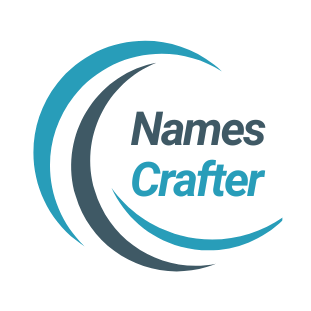The Impact of Online Learning on Traditional Education Systems
Introduction
The education sector has undergone a significant transformation in recent years, driven largely by advancements in technology. Online learning, once considered a supplementary tool, has now become a mainstream mode of education, influencing traditional education systems in profound ways. The shift towards digital learning has brought about numerous benefits, including accessibility, flexibility, and cost-effectiveness. However, it also presents challenges such as reduced social interaction, issues of digital divide, and concerns about assessment integrity. This article explores the impact of online learning on traditional education systems, analyzing its advantages, challenges, and the future of education.
The Rise of Online Learning
The integration of technology into education is not a new phenomenon. However, the COVID-19 pandemic acted as a catalyst, accelerating the adoption of online learning at an unprecedented rate. Educational institutions worldwide were forced to transition to remote learning, leading to the rapid development of digital tools and platforms. While many schools and universities have returned to in-person instruction, the impact of this digital shift remains significant. The emergence of online learning platforms such as Coursera, Udemy, Khan Academy, and edX has further solidified the role of digital education in modern learning.
Advantages of Online Learning
1. Increased Accessibility
One of the most significant advantages of online learning is its ability to break geographical barriers. Students from rural or underprivileged areas, who may not have access to quality education, can now enroll in courses offered by prestigious institutions worldwide. Online learning enables students with disabilities to access education with tools such as screen readers, subtitles, and voice recognition software.
2. Flexibility and Convenience
Unlike traditional classroom settings that require students to be present at specific times, online learning offers flexibility. Learners can study at their own pace, access recorded lectures, and revisit materials as needed. This flexibility benefits working professionals, parents, and those pursuing education alongside other commitments.
3. Cost-Effectiveness
Traditional education often comes with high costs, including tuition fees, commuting expenses, and accommodation charges. Online courses, in contrast, tend to be more affordable, with many offering free content or lower tuition fees. The elimination of physical infrastructure costs further reduces financial burdens on both students and educational institutions.
4. Personalized Learning Experience
Online learning platforms utilize artificial intelligence (AI) and adaptive learning technologies to tailor content to individual learners. Unlike traditional education, where instructors may struggle to address diverse learning needs, digital platforms can customize learning paths based on students’ progress and preferences.
5. Expanding Educational Opportunities
Online learning has introduced new avenues for acquiring skills beyond traditional academic subjects. Vocational training, coding boot camps, and specialized skill-based courses are now readily available online, making lifelong learning more accessible.
Challenges of Online Learning
1. Reduced Social Interaction
Traditional education provides students with an environment for face-to-face interaction, fostering communication skills, teamwork, and social development. Online learning, however, lacks this direct human connection, which may impact students’ interpersonal skills and overall learning experience.
2. Digital Divide
Despite the widespread adoption of online learning, the digital divide remains a pressing issue. Many students, particularly in developing countries, lack access to reliable internet connections, computers, or digital literacy skills. This disparity creates an unequal learning environment, limiting opportunities for disadvantaged students.
3. Quality of Education and Assessment Integrity
One of the concerns surrounding online education is the quality and credibility of courses. Not all online programs maintain the same level of rigor as traditional institutions. Additionally, assessment integrity is a challenge, as online exams are susceptible to cheating, making it difficult to evaluate students’ true capabilities.
4. Instructor Adaptability and Technical Issues
The transition to online learning requires educators to develop digital proficiency and adapt their teaching methods to virtual platforms. Many teachers, especially those accustomed to traditional classroom settings, may struggle with technology. Furthermore, technical issues such as connectivity problems and software glitches can disrupt the learning experience.
5. Student Motivation and Discipline
Online learning requires a higher degree of self-discipline and motivation. Without direct supervision, students may struggle to stay focused and complete coursework. Procrastination and distractions can hinder learning outcomes, making it essential for educators to develop engaging online strategies.
The Impact on Traditional Education Systems
1. Blended Learning Approaches
One of the most noticeable impacts of online learning on traditional education is the rise of blended learning. Many educational institutions have adopted a hybrid model that combines online and in-person learning. This approach allows students to benefit from the flexibility of digital education while retaining the advantages of face-to-face interactions.
2. Evolution of Teaching Methods
With the integration of technology, educators are exploring innovative teaching methods, such as flipped classrooms, gamification, and virtual reality-based learning. These techniques enhance engagement and improve knowledge retention, making traditional education more dynamic and interactive.
3. Redefining the Role of Educators
The role of teachers is evolving from being the sole providers of knowledge to facilitators of learning. With the availability of online resources, instructors are focusing more on guiding students, encouraging critical thinking, and fostering collaborative learning environments.
4. Institutional Adaptation
Educational institutions are investing in digital infrastructure, learning management systems (LMS), and online resources to remain competitive. Universities are expanding their online course offerings, and schools are integrating digital tools into their curricula to enhance learning experiences.
5. Greater Emphasis on Skills-Based Learning
Online learning has contributed to a shift in educational priorities, placing greater emphasis on skill development rather than rote memorization. Employers are increasingly valuing practical skills, leading institutions to incorporate project-based learning and competency-based assessments.
The Future of Education: A Harmonious Blend
The impact of online learning on traditional education is not about replacing one with the other but rather creating a balanced approach that leverages the strengths of both. As education continues to evolve, the focus should be on enhancing accessibility, maintaining quality standards, and fostering interactive and engaging learning experiences.
1. Expansion of Online and Hybrid Programs
The future of education will likely see a continued expansion of online programs, with universities and schools adopting hybrid models. The integration of artificial intelligence and virtual reality will further enhance online learning experiences.
2. Increased Collaboration Between Institutions
Educational institutions are increasingly collaborating with online platforms to provide students with diverse learning opportunities. Partnerships between universities, online course providers, and industry professionals will bridge the gap between academia and real-world applications.
3. Continuous Learning and Micro-Credentials
The concept of lifelong learning is becoming more prevalent, with individuals seeking continuous education through online platforms. Micro-credentials and certification programs are gaining recognition, allowing learners to acquire specific skills without committing to long-term degrees.
4. Policy and Infrastructure Development
Governments and educational policymakers need to address challenges such as the digital divide, assessment integrity, and data security. Investments in digital infrastructure and training programs for educators will be crucial in ensuring equitable access to quality education.
Conclusion
Online learning has had a transformative impact on traditional education systems, offering benefits such as accessibility, flexibility, and cost-effectiveness while posing challenges like reduced social interaction and assessment concerns. The future of education lies in a blended approach that combines the best of both worlds. As technology continues to shape the educational landscape, institutions, educators, and policymakers must work collaboratively to create an inclusive, engaging, and effective learning environment. The ultimate goal should be to leverage digital advancements while preserving the core values of traditional education, ensuring that learning remains a dynamic and enriching experience for all.







